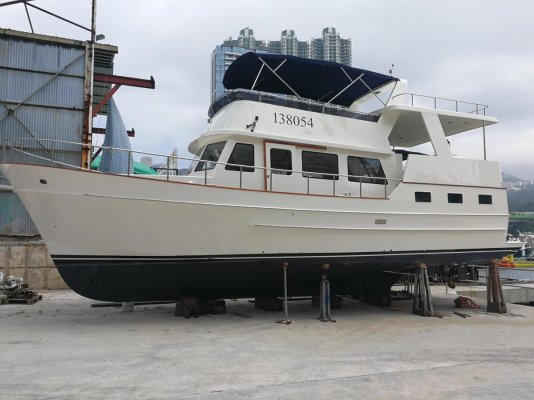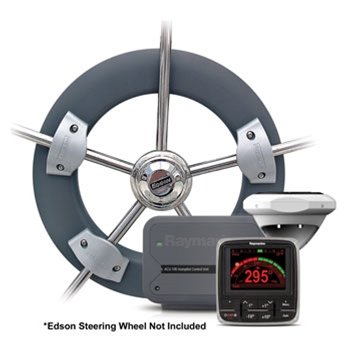I don't think the wheel pilot will handle a boat with that displacement. Maybe about half. I think you'll want a traditional drive system.
2x100 horses isn't too far from the 2x120hp to 2x135hp that are often seen on similar boats. And, they usually can cruise at about 9 knots, more limited by climbing the hill above hull speed than by hp in some ways of thinking.
Making some really rough guesses based upon some generic trawler that size....
-- With a water line of roughly 38ft, hull speed will be roughly 8kn, right around your desired cruise speed
-- Displacement of about 32,000lbs
-- Making wild estimation about how I've seen boats run with similar hull shapes, etc.
-- Probably needs 40hp to maintain that hull speed, if that, even accounting for a less than perfect real world, water, gear, etc.
-- Add in few hp to drive the alternators, lets say 2.5hp, each (about 60 amp output, each...1hp/25A)
-- That puts us somewhere in the range of 42-43hp to maintain hull speed.
-- If, at most, you want to run engines at 80% hp (hp != rpm, 80% hp likely developed < 80%rpm) for cruise, that puts you at needing 50-55hp each engine.
So...under the assumptions above, you'll be fine with 100hp/engine. No problem. Not even close.
Of course, if you want to start to climb the hill above that hull speed...your need for hp will go up really fast. So, climbing the hill, a 20-35% difference in HP won't nearly make that much difference in speed. Less than half of that, probably.
All of this is just me really wildly guessing, without doing any math, or looking back at any records.
The upshot is....my take is you'll do plenty fine with 200hp available....but need to get a traditional autopilot drive.


